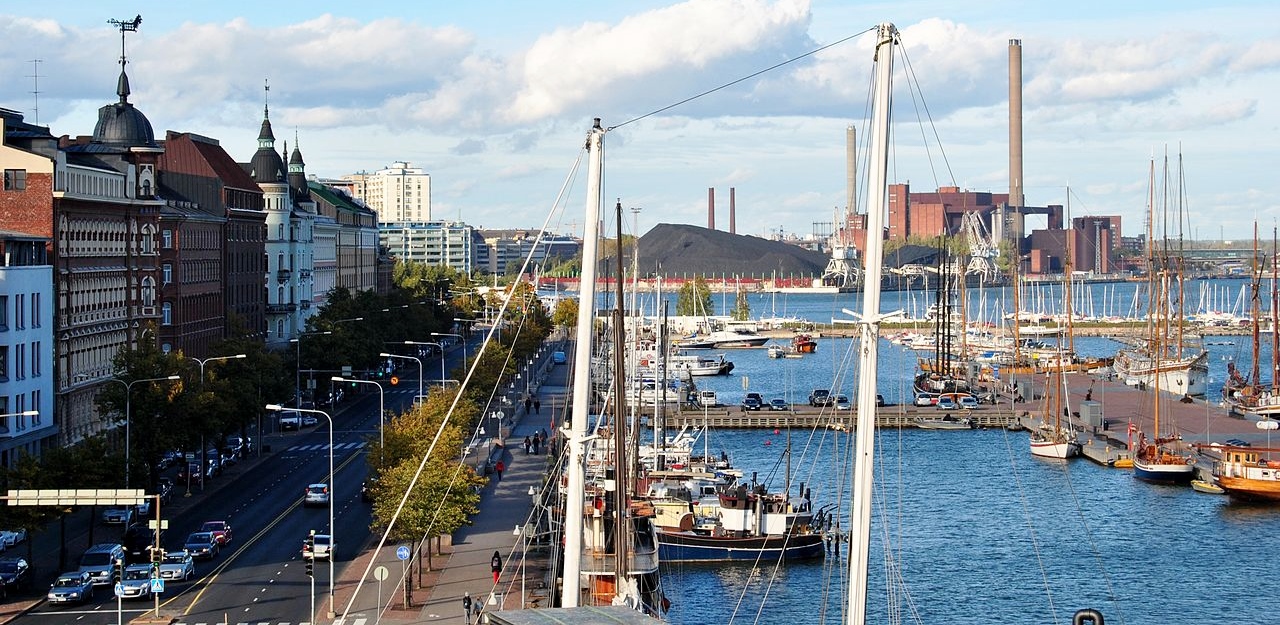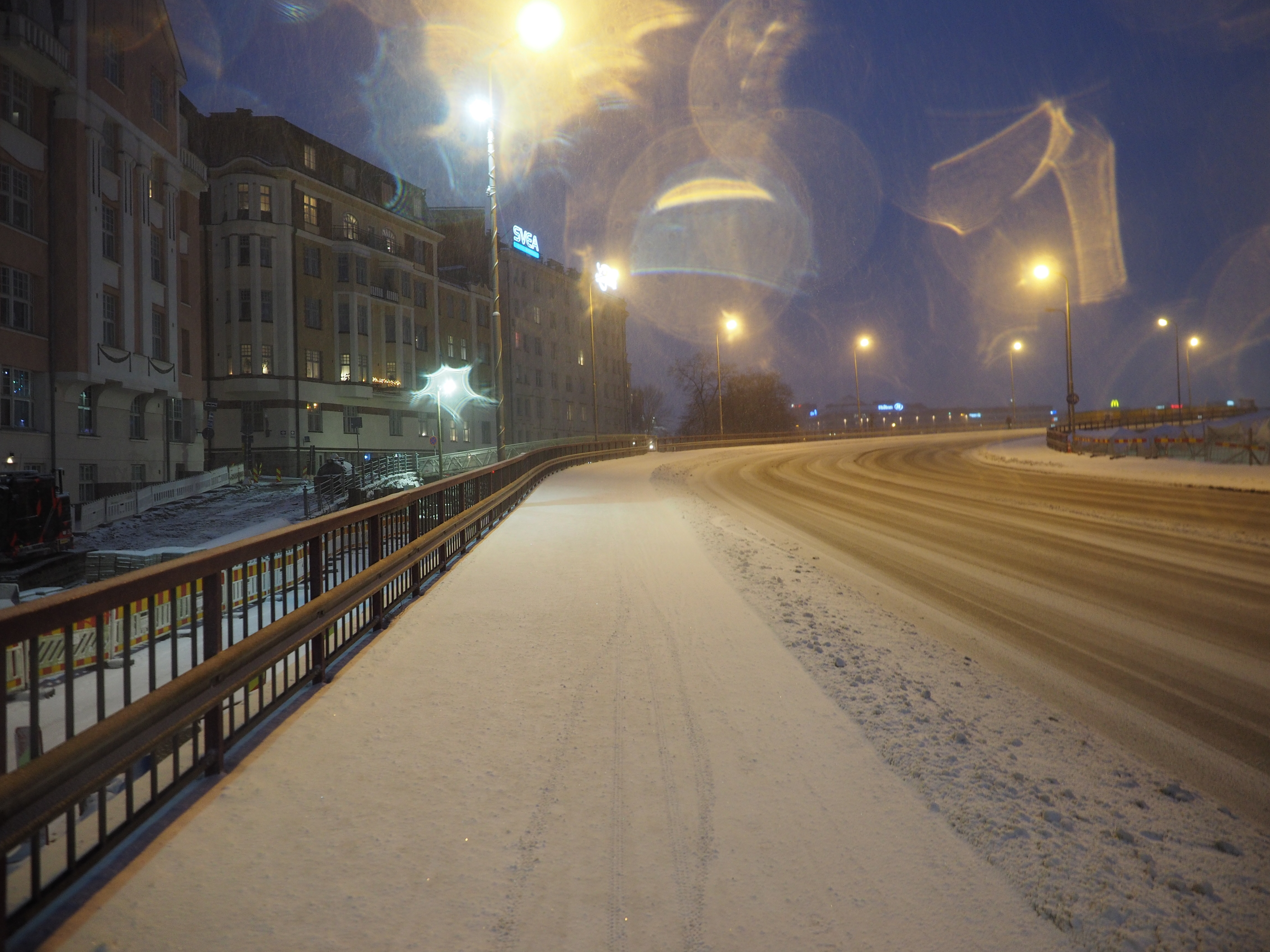Pohjoisranta on:
[Wikipedia]
[Google]
[Amazon]



 Pohjoisranta (
Pohjoisranta (
Kruunusillat , Raitiotieyhteys Laajasaloon , Yleissuunnitelma
''Uutta Helsinkiä'', city of Helsinki 2016. Accessed on 11 April 2021. In the early 1990s the street was widened by land reclamation, creating a wide foot and bicycle traffic way right at the coastline. Nowadays the proper traffic way is at the centre of the street while a separate traffic way is located at its western edge separated by a row of trees, use of which is only allowed for traffic leading to the buildings on the edge of the street and their parking lots.
Kertomuksia keskustan kortteleista
part 15
Korttelit.fi
Katoavaa Helsinkiä (Pohjoisranta 14)
''



 Pohjoisranta (
Pohjoisranta (Swedish
Swedish or ' may refer to:
Anything from or related to Sweden, a country in Northern Europe. Or, specifically:
* Swedish language, a North Germanic language spoken primarily in Sweden and Finland
** Swedish alphabet, the official alphabet used by ...
: ''Norra Kajen''), meaning "northern shore", is the eastern shore of the district of Kruununhaka
Kruununhaka (; ) is a neighbourhood of Helsinki, the capital of Finland.
Kruununhaka became the area next to the harbour and the center, when Helsinki was moved from the earlier location in the mid-1660s. From the very beginning, the residents i ...
in Helsinki
Helsinki ( or ; ; sv, Helsingfors, ) is the Capital city, capital, primate city, primate, and List of cities and towns in Finland, most populous city of Finland. Located on the shore of the Gulf of Finland, it is the seat of the region of U ...
, Finland
Finland ( fi, Suomi ; sv, Finland ), officially the Republic of Finland (; ), is a Nordic country in Northern Europe. It shares land borders with Sweden to the northwest, Norway to the north, and Russia to the east, with the Gulf of B ...
and a street running along it.
Description and history
Pohjoisranta is known for the Halkolaituri (''Vedkajen'', "firewood pier") pier which nowadays serves as a home for historical wooden ships. The pier got its name when the entire Pohjoisranta pier still was an import harbour for wood. The entire port of Helsinki was located in Pohjoisranta in the 17th and 18th centuries. Pohjoisranta also has a causeway connection to the outdoor island ofTervasaari
Tervasaari (; sv, Tjärholmen), meaning "tar island", is an island in Helsinki, Finland, in front of the district of Kruununhaka. Tervasaari is connected to the mainland by a long causeway called Tervasaarenkannas. The causeway is connected to t ...
. Pohjoisranta is surrounded by valuable buildings designed by Onni Tarjanne, Lars Sonck
Lars Eliel Sonck (10 August 1870 – 14 March 1956) was a Finnish architect. He graduated from Helsinki Polytechnic Institute in 1894 and immediately won a major design competition for a church in Turku, St Michael's Church, ahead of many esta ...
and Theodor Höijer
Carl Theodor Höijer (20 February 1843, Helsinki – 31 October 1910, Helsinki) was a Finns, Finnish architect. He designed a large number of buildings in central Helsinki. He was the first architect in Finland who managed to pursue a truly succe ...
.
After the Hakaniemi bridge
Hakaniemi (; sv, Hagnäs) is an unofficial district of Helsinki, the Finnish capital. It covers most of the neighbourhood of Siltasaari in the district of Kallio. Hakaniemi is located at the sea shore and is separated from the city centre by the ...
leading from Pohjoisranta to Sörnäisten rantatie
Sörnäisten rantatie (Swedish language, Swedish: ''Sörnäs strandväg'') is a wide street in Sörnäinen, Helsinki, Finland. It leads from the Hakaniemi market square to Suvilahti near the Kalasatama metro station.
For the most part, Sörnäist ...
was built in 1961 Pohjoisranta became an important traffic connection. Together with Esplanadi
Esplanadi ( sv, Esplanaden), colloquially known as Espa, is an esplanade and urban park in downtown Helsinki, Finland, situated between the Erottaja square and the Market Square. It is bordered on its northern and southern sides by the Pohjoisesp ...
and Sörnäisten rantatie it forms a part of the connection from the city centre to the Lahdenväylä , sv, Riksfyran; fi, Lahdenväylä; sv, Lahtisleden
, maint = the Finnish Transport Agency
, map = Finland national road 4.png
, length_km = 1295
, length_round =
, length_ref =
, established = 1938
, direction_a =
, terminus_a = Helsi ...
and Itäväylä
Itäväylä (the Eastern Highway, Swedish: Österleden) is a motorway-like road in the Greater Helsinki area of Finland, mainly in the Helsinki conurbation. It is part of the Finnish regional road 170 ( fi, Seututie 170, sv, Regionalväg 170). T ...
highways, also forming part of the Finnish national road 4 , sv, Riksfyran; fi, Lahdenväylä; sv, Lahtisleden
, maint = the Finnish Transport Agency
, map = Finland national road 4.png
, length_km = 1295
, length_round =
, length_ref =
, established = 1938
, direction_a =
, terminus_a = Helsi ...
and 7 as well as the E-road E75. The street also serves as the main connection to the South Harbour and the Olympia Terminal
The Olympia Terminal ( fi, Olympiaterminaali, sv, Olympiaterminalen) is a dock in the South Harbour of Helsinki, Finland. It was designed by the Hytönen- Luukkonen architects bureau and opened for the 1952 Summer Olympics.
Today, the termina ...
. The Pohjoisranta street is trafficked by about 29 thousand vehicles per day.''Uutta Helsinkiä'', city of Helsinki 2016. Accessed on 11 April 2021. In the early 1990s the street was widened by land reclamation, creating a wide foot and bicycle traffic way right at the coastline. Nowadays the proper traffic way is at the centre of the street while a separate traffic way is located at its western edge separated by a row of trees, use of which is only allowed for traffic leading to the buildings on the edge of the street and their parking lots.
Buildings
*Pohjoisranta 4 ('' Standertsköld house''): Built in 1885, designed byTheodor Höijer
Carl Theodor Höijer (20 February 1843, Helsinki – 31 October 1910, Helsinki) was a Finns, Finnish architect. He designed a large number of buildings in central Helsinki. He was the first architect in Finland who managed to pursue a truly succe ...
. Represents Renaissance Revival architecture
Renaissance Revival architecture (sometimes referred to as "Neo-Renaissance") is a group of 19th century architectural revival styles which were neither Greek Revival nor Gothic Revival but which instead drew inspiration from a wide range o ...
.
*Pohjoisranta 6 (''Bäck house''): Built in 1882, designed by Theodor Höijer. Facade is made of red brick.
*Pohjoisranta 8: Built in 1926, designed by architect David Frölander-Ulf. Represents Nordic Classicism
Nordic Classicism was a style of architecture that briefly blossomed in the Nordic countries (Sweden, Denmark, Norway and Finland) between 1910 and 1930.
Until a resurgence of interest for the period during the 1980s (marked by several scholarly ...
.
*Pohjoisranta 10: Built in 1910, facade designed by Lars Sonck
Lars Eliel Sonck (10 August 1870 – 14 March 1956) was a Finnish architect. He graduated from Helsinki Polytechnic Institute in 1894 and immediately won a major design competition for a church in Turku, St Michael's Church, ahead of many esta ...
and building plan by Onni Tarjanne. Represents Art Nouveau
Art Nouveau (; ) is an international style of art, architecture, and applied art, especially the decorative arts. The style is known by different names in different languages: in German, in Italian, in Catalan, and also known as the Modern ...
.
*Pohjoisranta 12 (''Donner house''): Built in 1899, designed by Magnus Schjerfbeck
Magnus Schjerfbeck (24 July 1860 — 8 May 1933) was a Finnish architect and architectural historian.
Education
Schjerfbeck studied at the Polytechnical Institute of Finland (later Helsinki University of Technology, now part of Aalto Universit ...
based on sketches by Sebastian Gripenberg. Represents Renaissance Revival architecture. Serves as the home of the Donner family.
*Pohjoisranta 14-16: Built in 1927, designed by master builder Toivo Pajunen. Represents Nordic Classicism.
*Pohjoisranta 18: Built in 1885, designed by architect Albert Mellin. Represents Renaissance Revival architecture.
*Pohjoisranta 20 (''Kiholinna''): Built in 1929, designed by architect Kalle Lehtovuori. Originally built as a dormitory for military officers.
Sources
* ''Helsingin Sanomat
''Helsingin Sanomat'', abbreviated ''HS'' and colloquially known as , is the largest subscription newspaper in Finland and the Nordic countries, owned by Sanoma. Except after certain holidays, it is published daily. Its name derives from that of ...
''Kertomuksia keskustan kortteleista
part 15
Korttelit.fi
References
External links
* {{commonscat-inlineKatoavaa Helsinkiä (Pohjoisranta 14)
''
Suomen Kuvalehti
''Suomen Kuvalehti'' (lit. "Finland's picture magazine", or "The Finnish picture magazine") is a weekly Finnish language family and news magazine published in Helsinki, Finland.
History and profile
''Suomen Kuvalehti'' was founded in 1873 and pu ...
'' 1 July 1925, issue #26-27, p. 29, digital archive of the Finnish National Library
Streets in Helsinki
Kruununhaka